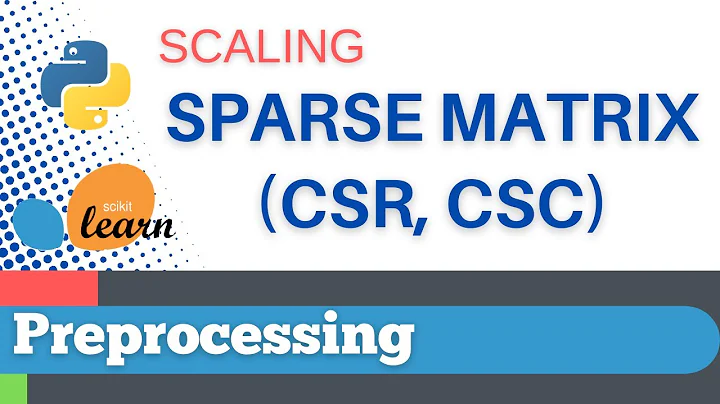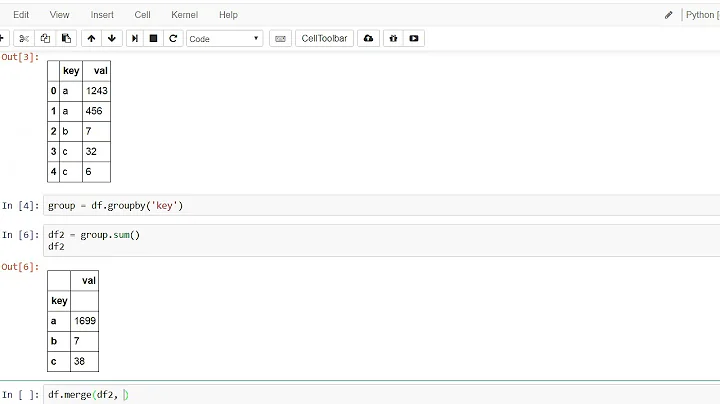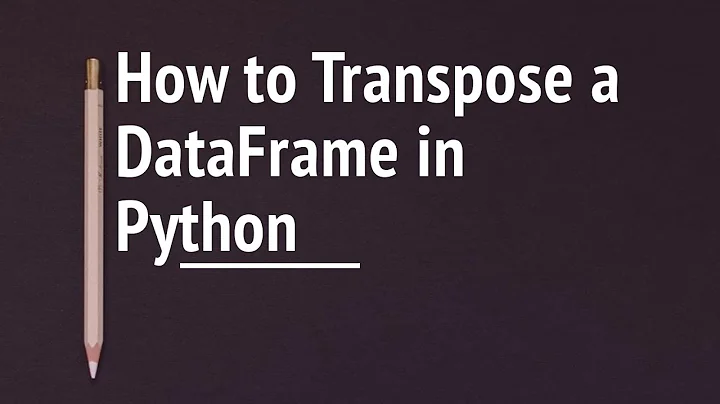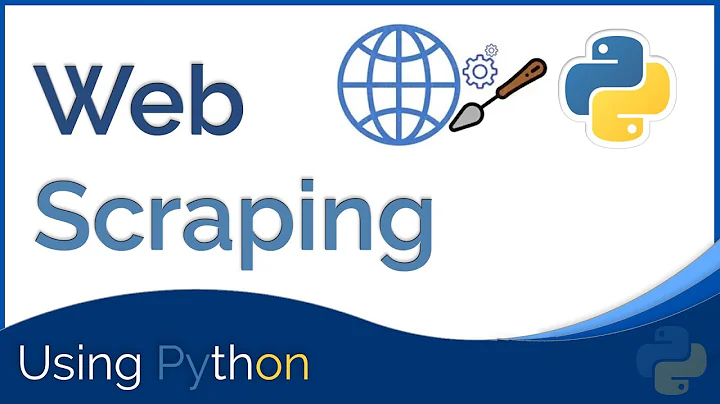transform scipy sparse csr to pandas?
Solution 1
If A is csr_matrix, you can use .toarray() (there's also .todense() that produces a numpy matrix, which is also works for the DataFrame constructor):
df = pd.DataFrame(A.toarray())
You can then use this with pd.concat().
A = csr_matrix([[1, 0, 2], [0, 3, 0]])
(0, 0) 1
(0, 2) 2
(1, 1) 3
<class 'scipy.sparse.csr.csr_matrix'>
pd.DataFrame(A.todense())
0 1 2
0 1 0 2
1 0 3 0
<class 'pandas.core.frame.DataFrame'>
RangeIndex: 2 entries, 0 to 1
Data columns (total 3 columns):
0 2 non-null int64
1 2 non-null int64
2 2 non-null int64
In version 0.20, pandas introduced sparse data structures, including the SparseDataFrame.
In pandas 1.0, SparseDataFrame was removed:
In older versions of pandas, the
SparseSeriesandSparseDataFrameclasses were the preferred way to work with sparse data. With the advent of extension arrays, these subclasses are no longer needed. Their purpose is better served by using a regular Series or DataFrame with sparse values instead.
The migration guide shows how to use these new data structures.
For instance, to create a DataFrame from a sparse matrix:
from scipy.sparse import csr_matrix
A = csr_matrix([[1, 0, 2], [0, 3, 0]])
df = pd.DataFrame.sparse.from_spmatrix(A, columns=['A', 'B', 'C'])
df
A B C
0 1 0 2
1 0 3 0
df.dtypes
A Sparse[float64, 0]
B Sparse[float64, 0]
C Sparse[float64, 0]
dtype: object
Alternatively, you can pass sparse matrices to sklearn to avoid running out of memory when converting back to pandas. Just convert your other data to sparse format by passing a numpy array to the scipy.sparse.csr_matrix constructor and use scipy.sparse.hstack to combine (see docs).
Solution 2
UPDATE for Pandas 1.0+
Per the Pandas Sparse data structures documentation, SparseDataFrame and SparseSeries have been removed.
Sparse Pandas Dataframes
Previous Way
pd.SparseDataFrame({"A": [0, 1]})
New Way
pd.DataFrame({"A": pd.arrays.SparseArray([0, 1])})
Working with SciPy sparse csr_matrix
Previous Way
from scipy.sparse import csr_matrix
matrix = csr_matrix((3, 4), dtype=np.int8)
df = pd.SparseDataFrame(matrix, columns=['A', 'B', 'C'])
New Way
from scipy.sparse import csr_matrix
import numpy as np
import pandas as pd
matrix = csr_matrix((3, 4), dtype=np.int8)
df = pd.DataFrame.sparse.from_spmatrix(matrix, columns=['A', 'B', 'C', 'D'])
df.dtypes
Output:
A Sparse[int8, 0]
B Sparse[int8, 0]
C Sparse[int8, 0]
D Sparse[int8, 0]
dtype: object
Conversion from Sparse to Dense
df.sparse.to_dense()
Output:
A B C D
0 0 0 0 0
1 0 0 0 0
2 0 0 0 0
Sparse Properties
df.sparse.density
Output:
0.0
Solution 3
You could also avoid getting back a sparse matrix in the first place by setting the parameter sparse to False when creating the Encoder.
The documentation of the OneHotEncoder states:
sparse : boolean, default=True
Will return sparse matrix if set True else will return an array.
Then you can again call the DataFrame constructor to transform the numpy array to a DataFrame.
Related videos on Youtube
KillerSnail
Updated on July 09, 2022Comments
-
KillerSnail almost 2 years
I have used the
sklearn.preprocessing.OneHotEncoderto transform some data the output is
scipy.sparse.csr.csr_matrixhow can I merge it back into my original dataframe along with the other columns?I tried to use
pd.concatbut I getTypeError: cannot concatenate a non-NDFrame objectThanks
-
user77005 over 6 yearsWhat can I do if my A.toarray() leads to a MemoryError? Is there any way to create the Dataframe without converting it back to a ndarray?
-
Stefan over 6 yearsYou may want to take a look at pandas sparse data structures
-
 Anne about 6 yearsIs there any chance I can pass my values as labels for the new dataframe? E.g., if the hot encoder had values given from column 'letter' with 'a a b b c a' that my new dataframe would be headed by letter_a, letter_b etc, much like with the dummy-encoder?
Anne about 6 yearsIs there any chance I can pass my values as labels for the new dataframe? E.g., if the hot encoder had values given from column 'letter' with 'a a b b c a' that my new dataframe would be headed by letter_a, letter_b etc, much like with the dummy-encoder? -
 Anne about 6 yearsSolved this by passing different arguments to the dummy encoder
Anne about 6 yearsSolved this by passing different arguments to the dummy encoder -
CKM almost 5 yearsCaveat: if sparse matrix is too big, it will throw memory error since
.toarray()creates a dense metrix. -
cangrejo over 4 yearsIt's more than a caveat. This is completely useless with any sparse matrix that has any business being such.
-
Stefan over 4 years@cangrejo how is
.todense()useless if OP wants to incorporate sparse matrix into DataFrame and how isSparseDataFrame()useless as an alternative given memory constraints? -
cangrejo over 4 years@Stefan Sparse formats are often employed to store matrices too large to fit in memory.
-
Stefan over 4 years@cangrejo OP explicitly intended to combine a sparse matrix with a
DataFrame. The answer demonstrates how to do this. How is this completely useless, rather than not applicable in case the data does not fit into memory, however frequent these cases may be? -
JulesDoe almost 3 yearsOutdated scince pandas 1.0








